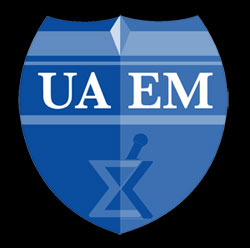If you’re new to the issue of access to medicines, you’ll see us talk often of intellectual property and how these laws and rules affect people’s ability to obtain life-saving medicines. Today I’ll discuss compulsory licensing but before I do, I need to talk a bit about intellectual property.
What is intellectual property? Well, intellectual property is a branch of law that deals with the rights and ownership of ideas–properties of the mind, so to speak. It’s grounded in the belief that individuals should be able to protect their ideas and profit off of them and in turn, the financial returns will also drive economic development. We usually see intellectual property in the form of:
- Copyright (the expression of ideas say in a textbook or journal article)
- Trademarks (think of Microsoft’s floating window logo and McDonald’s golden arches) or
- Patents (which applies to inventions like cameras or chemical compounds)
So this is all very well and good we might say–if I come up with some original work, I ought to be able to take ownership and make money to recoup the time and resources I spent coming up with that valuable idea. For the most part I would agree with that. But what about when this idea means the difference between life or death, sickness and health? What happens when people don’t have the means to afford the prices someone else sets? That’s where compulsory licenses (CL) come into light. CL’s are a legal means to force a patent-holder to grant use of a patent to the government or another party. Historically, CL’s are used in extraordinary situations to protect health and human safety, situations like:
- World War II, where the allies needed to manufacture a large number of specific engines in airplanes for minimum cost.
- 2001, where the Anthrax bacteria scare in the U.S. led their government to issue a compulsory license to maximize production of the antibiotic ciprofloxacin.
- The HIV/AIDS pandemic, where the cost to treat one patient for one year in the early 1990’s was well over $10,000.
So we see that there are very good reasons to use compulsory licensing when human safety is threatened and there is a clear precedent of its use and value. When faced with the rising problem of access to medicines in the developing world, the World Trade Organization incorporated means to address these imbalances by implementing mechanisms to use CL in the international trade agreement, TRIPS. Critics of the WTO have argued however that these measures are insufficient and do not allow CL to be effectively used by populations in need (read more in the links below).
Initially TRIPS only allowed a country to obtain a compulsory license for domestic markets, that meant if you’re a country like Rwanda that has no pharmaceutical industry, you will need someone industrialized (like Canada) to export medicine to you. TRIPS was updated to reflect this gap in something called the ‘August 30th Decision’–it allowed member countries to develop a legal mechanism for manufacturers to obtain a CL so they could export a life-saving medicine to developing countries. Canada was the first to do so by creating Canada’s Access to Medicines Regime; however, this is far from a functional solution which Dave Ng writes more about here.
Compulsory licensing is but one solution for a variety of problems that constitute the challenging in providing medicines for the 1-in-3 people around the world who still lack access. We have much to talk about the limitations of compulsory licensing, other mechanisms for improving access in terms of IP management and other logistical problems that prevent medicines reaching points of care from points of manufacturing.
For more readings on compulsory licensing in general and in practice, visit:
- “Compulsory licensing of pharmaceuticals and TRIPS” WTO.
- “Overcoming Patent Barriers” Doctors Without Borders.
- “Delivering on the Pledge: Global Access to Medicines, WTO Rules, and Reforming Canada’s Law on Compulsory Licensing for Export” — article in McGill International Journal of Sustainable Development Law & Policy, Volume 3, Issue 1











Pingback: Donald Trump and Access to Medicine: My predictions. | My Rights Versus Yours